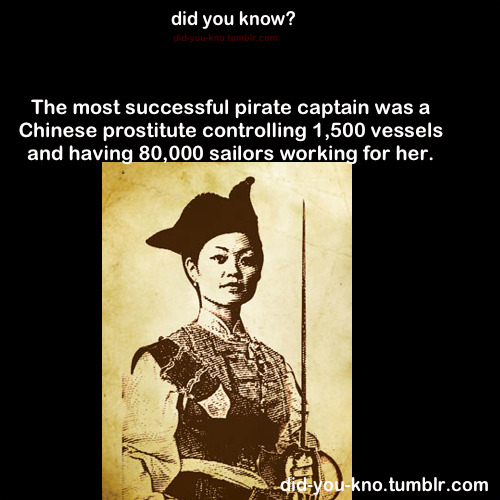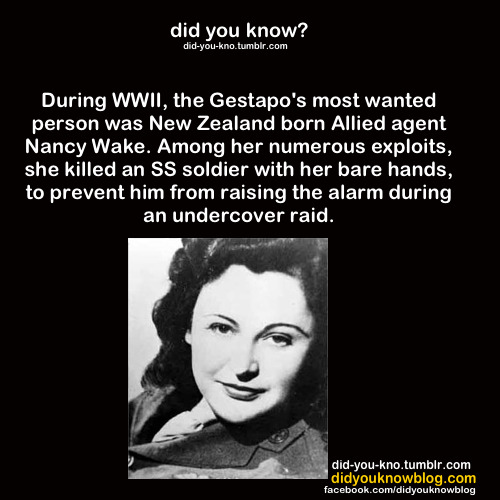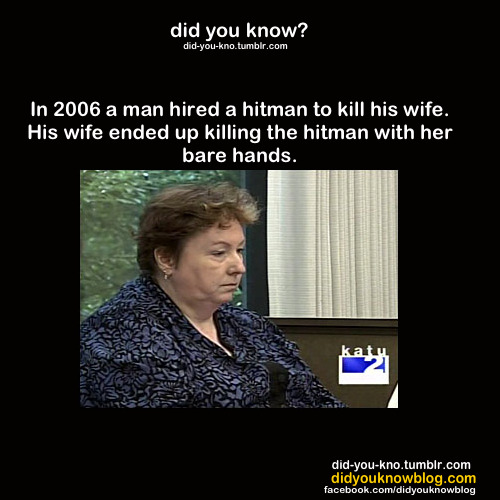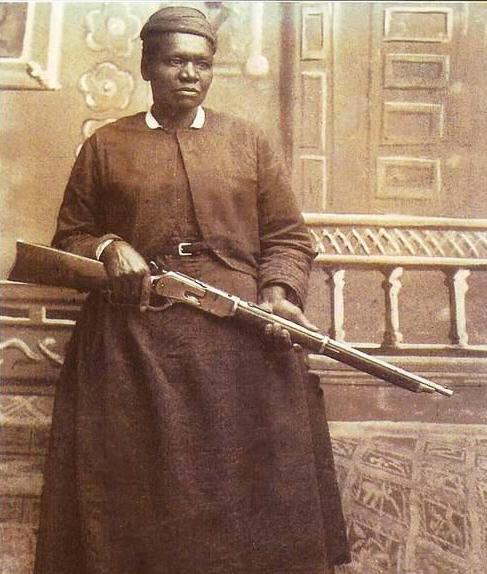Text
I have to say that I am one of those people who looks up random things online to see if I can find anything related to fandoms that I am in. I found a company that does reproductions of Pete Duel's "Hannibal Heyes" hat for A THOUSAND MULLAS!
Thank god that I found a lady who "makes" the brim decal. So all you have to do is measure the hat and give it to her to either get the parts to make yourself or she'd make it for you.
I did read a post made by someone who went out and made it their own selves with thrift store finds.
I just have to say that I am deeply in love with his hat in the show and one of these days I am gonna put together my own. How or when I have no clue. But I am gonna have a one of a kind Hannibal Heyes hat. :)
7 notes
·
View notes
Photo
god damn this man is cute.

18 notes
·
View notes
Link
lol.
I am 29 and still don't have anyone. Don't feel bad about it.
A colleague came to me earlier this week. This in itself is not odd, people often come to ask me stuff (I’m just that awesome). Anyway. She entered my office and said;
"I don’t know if you Swedes do this, or how you do..to connect with each other.. to get to know each other.. My eldest son is 25,...
2 notes
·
View notes
Photo










Female BAMFs Throughout History
508K notes
·
View notes
Photo

Rosa May, well known prostitute that frequented Virginia City Nevada and Bodie California during the gold rush. She was an amazing woman, apart from her profession, she was a prominent figure in 19th century old west history. You can visit her grave at Bodie California.
2 notes
·
View notes
Photo


Billy the Kid’s face restored, c.1880
“There is only one known photograph of Billy the Kid – a tintype from about 1880 but it is badly damaged and that makes it difficult to see his face clearly. I have digitally removed the damage from the photograph and, as a professional facial analyst, I have reconstructed the missing parts of Billy’s face.”
- Alexandra Hamer
137 notes
·
View notes
Photo



Gang War of the Old West —- The Tong War of Weaverville
The California Gold Rush brought immigrants from all over the world who sought adventure, fame, and riches. Unfortunately many of these people brought with them seedy characters and old world problems. Among Chinese immigrants, Chinese gangs called the “tongs” settled in California seeking new opportunities among the west’s criminal classes. Just like gangs today, the tongs conducted a wide range of criminal activity including drug smuggling (opium), prostitution, gambling, extortion, murder, theft, and sex slavery. To portray a respectable front, they also tended to serve as rotary clubs, social clubs, and unions for the local Chinese miners.
The mining camp of Weaverville, California was home to over 2,000 Chinese immigrants and headquarters to two tongs called the Young Wo and Ah You. In 1854, a gambling dispute and conflict over mining rights led to friction between the two rival gangs. As one probably knows about Old West range wars and vicious gangs, this was not a situation that was going to end peacefully. The two gangs declared “there ain’t enough room in this town for the both of us” and prepared for war.
Immediately the two gangs being to raise militias armed with a motley collection of old world and new world weapons. Blacksmiths were hired to produce swords, spears, shields, and armor for the tongs. When local law enforcement authorities learned the tongs were arming, they issued fines to the blacksmiths. Rather than stop, the blacksmiths continued production as the fine was minuscule compared to the profits they were making. In addition to swords and spears, the tongs also acquired a number of military muskets left over from the Mexican War as well as some Colt revolvers. To learn how to use their new weaponry, which was mostly unknown to the Chinese at the time, the tongs hired white military advisers to train them.
As word spread of the coming battle, miners from all over the region came to Weaverville to place their bets and view the spectacle. In July of 1854 the two gangs met prepared to do battle, numbering about 260 men altogether. At first the sides were reluctant to fight each other, instead posturing in hopes of intimidating the other side into giving up. However, the onlookers began to incite the gangs in hopes for a bloody battle. Finally a Dutch miner drew his pistol and fired toward one of the gangs, sparking a frenzied bout of fighting. In an unusual display of arms, swords and spears clashed as tongs armed with muskets and revolvers also took potshots at each other. Due to the inexperience of the amateur tong gunfighters, few bullets found their mark. The battle raged for ten minutes before the local Sheriff and Federal Marshal was able to intervene and break up the fight. By the end of the battle 8 men lay dead and a dozens were wounded. Among those killed was the Dutch miner who, in the midst of the battle had been shot in the back of the head by a rival miner.
After the battle both tongs agreed that honor had been satisfied and made a truce. The two tongs never fought again.
1K notes
·
View notes
Photo

"How many murders do you suppose old western towns saw a year?…How about five? That was the most any old-west town saw in any one year. Ever." #CrackedClassic
6 Ridiculous History Myths (You Probably Think Are True)
228 notes
·
View notes
Photo
I have seen this gun mentioned several times in AS&J fan fic and I thought it'd be something the fandom might enjoy.
Thanks for this post. :)


The Smith & Wesson Model 3 Schofield Single Action,
The S&W Model 3 came in many variations, but the most popular models where the Russian and the Schofield. The Russian was the model produced for the Russian Army while the Schofield was produced for the US Military. The Schofield Model was an improvement of the regular Model 3 with modifications made by Major George W. Schofield, a high respected and experienced cavalry officer. The original Model 3 was a top break revolver where the revolver opened along a hinged frame exposing the cylinder’s chambers. When the revolver was opened an extractor also ejected the empty casings all at once. This system was much faster than the Colt Model 1873 Single Action Army, in which empty casings had to be manually unload one at a time, then cartridges loaded one at a time through a loading port.
While the system was a great improvement in theory, there was one terrible flaw. In in the heat of combat an enemy grabbed the barrel and pulled down, it would break the revolver open while causing the cartridges to be ejected, thus effectively unload the revolver. Major Schofield re-designed the Model 3’s break top system so that it would only open by actuating a lever, which could be accomplished with a flick of the user’s thumb.
The Schofield revolver was adopted by the US Army and issued to officers and cavalry along with the Colt Model 1873. Originally they were chambered for .45 Schofield, a shortened version of the .45 Colt that could be fired from the Colt Model 1873. Later they were chambered for a new cartridge called the .44 S&W. Outside of the military the Schofield was popular with civilians. A number of outlaws, lawmen, and cowboys used them such as Jesse James, John Wesley Hardin, Pat Garrett, Theodore Roosevelt, Virgil Earp, and Billy the Kid. They were also popular with Wells Fargo and Company, who often issued them to their road agents.
Production was discontinued in 1898. Today several reproduction models are produced by Uberti and Armi San Marco.
365 notes
·
View notes
Photo

Rocky Mountains, 1938
RCMP Officer mounted
Source - LAC
256 notes
·
View notes
Photo



April 3rd 1882: Jesse James killed On this day in 1882 the famous outlaw of the Wild West, Jesse James, was killed by Robert Ford. James was a member of the James-Younger Gang from Missouri; his gang gained notoriety in the period 1866 to 1876 as they robbed banks, stagecoaches and trains. He first gained national attention after shooting a cashier during a robbery of a Missouri bank. The gang’s decline began with an attempted robbery of a bank in Northfield, Minnesota when the majority of the gang was captured or killed. James and his gang were pursued by law enforcement until the outlaw Robert Ford, who had posed as James’ friend, shot him in the back of the head in order to collect the bounty on him. The governor of Missouri quickly pardoned Ford, which shocked the public as it suggested their governor had conspired to kill a private citizen. "In Loving Memory of my Beloved Son, Murdered by a Traitor and Coward Whose Name is not Worthy to Appear Here" - epitaph for Jesse James, written by his mother
260 notes
·
View notes
Photo

You’d grow a man’s man mustache too if you were a slavery-escapin’, outlaw-killin’ badass.
6 Real-Life Gunslingers Who Put Billy the Kid to Shame
#2. Bass Reeves Dispatches Three Cop Killers With the Utmost Courtesy
Bass Reeves was a slave in Texas before managing to escape to Oklahoma (or Indian Territory, as it was called back before that name became ironic), where he was appointed a U.S. deputy marshal for his expert skill as a tracker and marksman. During his career as the most respected marshal in Oklahoma, he participated in more gunfights than a Hong Kong action star and achieved an arrest record of about 3,000. Despite the fact that he personally planted 14 outlaws in the ground, Reeves himself never got so much as a scratch.
Read More
322 notes
·
View notes
Photo

Female Scout, 1886
(via http://www.amazon.com/)
982 notes
·
View notes
Photo


The Kepplinger Holdout card cheating device, late 19th century,
J. D. Kepplinger was a master card cheat and con man in the late 19th century. In 1888 the brilliant Kepplinger invented his own card holdout device. The device attached to his arm, which was concealed by his sleeve, which was connected by a cable to a mechanism attached to his thighs. When he opened and closed his legs a metal claw would popup through his sleeve and snatch away a card for later. When Kepplinger needed that card later, he simply opened his legs again, and the device would conveniently insert the card back into his hand.
With his special Kepplinger holdout device, also known as the San Francisco holdout, J.D. Kepplinger was able to clean out many cardplayers throughout the Old West. That was until professional gamblers became suspicious.
One day during a pleasant game of poker three other gamblers seized him and dragged him to the back of the saloon. There they stripped off his clothes and discovered the ingenious device. They offered Kepplinger two options, either he construct devices for them or he face the consequences of being caught cheating at cards (which mean’t being shot or beaten up). Kepplinger made more devices for his new comrades, who formed a team of card cheats. For over a year the team grew rich cleaning out the table of the Barbary Coast and San Francisco. That was until they were caught by the police and sent to prison.
1K notes
·
View notes
Photo

August 13, 1860: Sharpshooter Annie Oakley Born
On this day in 1860, American exhibition shooter Annie Oakley was born in Ohio. Annie’s impeccable aim captured the attention of major figures worldwide, such as Queen Victoria of England and King Umberto I of Italy, for whom she performed while in Europe.
One of Annie’s most famous tricks was splitting a playing card with a .22 caliber rifle, edge-on, and putting several more holes in it before it could touch the ground at 90 feet away.
Learn about Annie Oakley’s lifelong adventures and travels with this timeline courtesy of American Experience.
622 notes
·
View notes
Photo

The Legend of Stagecoach Mary,
Also known as Mary Fields, Stagecoach Mary was one of the toughest ladies of the Old West. Born as a slave on a Tennessee plantation in 1832, she gained her freedom after the Civil War and the resulting abolition of slavery. After the Civil War Mary made her way west where she eventually settled in Cascade County, Montana.
In Montana Mary would gain a reputation as one of the toughest characters in the territory. Unlike most women of the Victorian Era, Mary had a penchant for whiskey, cheap cigars, and brawling. It was not uncommon for men to harass her because of her race or her gender. Those who earned her disfavor did so at their own risk, as the six foot tall two hundred pound woman served up a mean knuckle sandwich. According to her obituary in Great Falls Examiner “she broke more noses than any other woman in Central Montana”.
In Montana Mary made a living doing heavy labor for a Roman Catholic convent. She did work such as carpentry, chopping wood, and stone work. However it was her job of transporting supplies to the convent by wagon that would earn her the name “Stagecoach Mary”. The job was certainly dangerous, as she braved fierce weather, bandits, robbers, and wild animals. In one instance her wagon was attacked by wolves, causing the horses to panic and overturn the wagon. Throughout the night Stagecoach Mary fought off several wolf attacks with a rifle, a ten gauge shotgun, and a pair of revolvers.
Mary’s job with the convent ended when another hired hand complained it was not fair that she made more money than him to the townspeople and the local bishop. When the bishop dismissed his claims, he went to a local saloon, saying that it was not fair that he should have to work with a black woman (he said something much more obscene). In response, Mary shot him in the bum. The bishop fired Mary, and she was out of a job.
After a failed attempt at running a restaurant, Stagecoach Mary was hired to run freight for the US Postal Service. Today she holds the distinction of being the first African American postal employee. Despite delivering parcels to some of the most remote and rugged areas of Montana, Mary gained a reputation for always delivering on time regardless of the weather or terrain.
At the age of seventy, Stagecoach Mary retired from the parcel business and opened a laundry. In one incident when a customer refused to pay, the 72 year old woman knocked out one of his teeth. For the remainder of her life Mary settled down to peace and quiet, drinking whiskey and smoking cheap cigars. She passed away in 1914 at the age of 82.
14K notes
·
View notes
